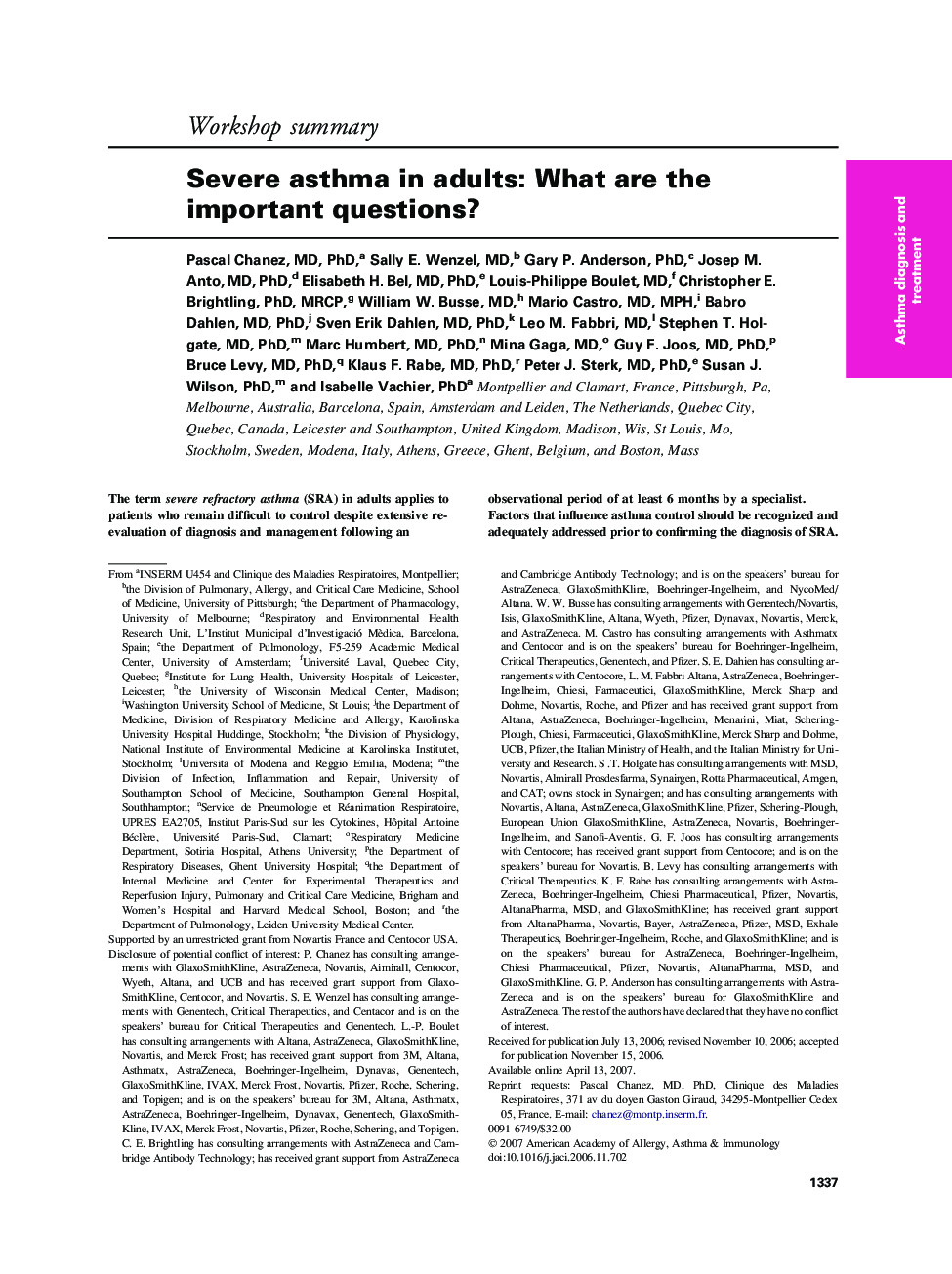| Article ID | Journal | Published Year | Pages | File Type |
|---|---|---|---|---|
| 3203329 | Journal of Allergy and Clinical Immunology | 2007 | 12 Pages |
The term severe refractory asthma (SRA) in adults applies to patients who remain difficult to control despite extensive re-evaluation of diagnosis and management following an observational period of at least 6 months by a specialist. Factors that influence asthma control should be recognized and adequately addressed prior to confirming the diagnosis of SRA. This report presents statements according to the literature defining SRA in order address the important questions. Phenotyping SRA will improve our understanding of mechanisms, natural history, and prognosis. Female gender, obesity, and smoking are associated with SRA. Atopy is less frequent in SRA, but occupational sensitizers are common inducers of new-onset SRA. Viruses contribute to severe exacerbations and can persist in the airways for long periods. Inflammatory cells are in the airways of the majority of patients with SRA and persist despite steroid therapy. The TH2 immune process alone is inadequate to explain SRA. Reduced responsiveness to corticosteroids is common, and epithelial cell and smooth muscle abnormalities are found, contributing to airway narrowing. Large and small airway wall thickening is observed, but parenchymal abnormalities may influence airway limitation. Inhaled corticosteroids and bronchodilators are the mainstay of treatment, but patients with SRA remain uncontrolled, indicating a need for new therapies.
